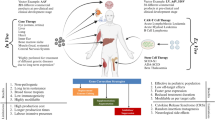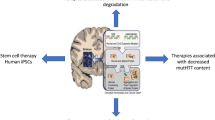Abstract
Single nucleotide mutations (SNMs) are associated with a variety of human diseases. The CRISPR/Cas9 genome-editing system is expected to be useful as a genetic modification method for production of SNM-induced mice. To investigate whether SNM-induced mice can be generated by zygote microinjection of CRISPR/Cas9 vector and single-stranded DNA (ssDNA) donor, we attempted to produce albino C57BL/6J mice carrying the Tyr gene SNM (G291T) from pigmented C57BL/6J zygotes. We first designed and constructed a CRISPR/Cas9 expression vector for the Tyr gene (px330-Tyr-M). DNA cleavage activity of px330-Tyr-M at the target site of the Tyr gene was confirmed by the EGxxFP system. We also designed an ssDNA donor for homology-directed repair (HDR)-mediated gene modification. The px330-Tyr-M vector and ssDNA donor were co-microinjected into the pronuclei of 224 one-cell-stage embryos derived from C57BL/6J mice. We obtained 60 neonates, 28 of which showed the ocular albinism and absence of coat pigmentation. Genomic sequencing analysis of the albino mice revealed that the target of SNM, G291T in the Tyr gene, occurred in 11 mice and one founder was homozygously mutated. The remaining albino founders without Tyr G291T mutation also possessed biallelic deletion and insertion mutants adjacent to the target site in the Tyr locus. Simple production of albino C57BL/6J mice was provided by C57BL/6J zygote microinjection with px330-Tyr-M DNA vector and mutant ssDNA (G291T in Tyr) donor. A combination of CRISPR/Cas9 vector and optional mutant ssDNA could be expected to efficiently produce novel SNM-induced mouse models for investigating human diseases.





Similar content being viewed by others
References
Capecchi MR (2005) Gene targeting in mice: functional analysis of the mammalian genome for the twenty-first century. Nat Rev Genet 6:507–512
Carbery ID, Ji D, Harrington A, Brown V, Weinstein EJ et al (2010) Targeted genome modification in mice using zinc-finger nucleases. Genetics 186:451–459
Chen F, Pruett-Miller SM, Huang Y, Gjoka M, Duda K et al (2011) High-frequency genome editing using ssDNA oligonucleotides with zinc-finger nucleases. Nat Methods 8:753–755
Cong L, Ran FA, Cox D, Lin S, Barretto R et al (2013) Multiplex genome engineering using CRISPR/Cas systems. Science 339:819–823
Doetschman T, Gregg RG, Maeda N, Hooper ML, Melton DW et al (1987) Targetted correction of a mutant HPRT gene in mouse embryonic stem cells. Nature 330:576–578
Fu Y, Foden JA, Khayter C, Maeder ML, Reyon D et al (2013) High-frequency off-target mutagenesis induced by CRISPR-Cas nuclease in human cells. Nat Biotechnol 31:822–826
Gondo Y (2008) Trends in large-scale mouse mutagenesis: from genetics to functional genomics. Nat Rev Genet 9:803–810
Gordon JW, Ruddle FH (1981) Integration and stable germ line transmission of genes injected into mouse pronuclei. Science 214:1244–1246
Haga H, Yamada R, Ohnishi Y, Nakamura Y, Tanaka T (2002) Gene-based SNP discovery as part of the Japanese Millennium Genome Project: identification of 190,562 genetic variations in the human genome. Single-nucleotide polymorphism. J Hum Genet 47:605–610
Hauschild-Quintern J, Petersen B, Cost GJ, Niemann H (2013) Gene knockout and knockin by zinc-finger nucleases: current status and perspectives. Cell Mol Life Sci 70:2969–2983
Hirakawa M, Tanaka T, Hashimoto Y, Kuroda M, Takagi T et al (2002) JSNP: a database of common gene variations in the Japanese population. Nucleic Acids Res 30:158–162
Imamura M, Maeda S, Yamauchi T, Hara K, Yasuda K et al (2012) A single-nucleotide polymorphism in ANK1 is associated with susceptibility to type 2 diabetes in Japanese populations. Hum Mol Genet 21:3042–3049
Kou I, Takahashi A, Urano T, Fukui N, Ito H et al (2011) Common variants in a novel gene, FONG on chromosome 2q33.1 confer risk of osteoporosis in Japanese. PLoS ONE 6:e19641
Le FN, Kelsall SR, Mintz B (1996) Base substitution at different alternative splice donor sites of the tyrosinase gene in murine albinism. Genomics 37:245–248
Mali P, Yang L, Esvelt KM, Aach J, Guell M et al (2013) RNA-guided human genome engineering via Cas9. Science 339:823–826
Mashiko D, Fujihara Y, Satouh Y, Miyata H, Isotani A et al (2013) Generation of mutant mice by pronuclear injection of circular plasmid expressing Cas9 and single guided RNA. Sci Rep. 3:3355
Mashiko D, Young SA, Muto M, Kato H, Nozawa K (2014) Feasibility for a large scale mouse mutagenesis by injecting CRISPR/Cas plasmid into zygotes. Dev Growth Differ 56:122–129
Mizuno S, Mizobuchi A, Iseki H, Iijima S, Matsuda Y et al (2010) A novel locus on proximal chromosome 18 associated with agenesis of the corpus callosum in mice. Mamm Genome 21:525–533
Rademakers R, Baker M, Gass J, Adamson J, Huey ED et al (2007) Phenotypic variability associated with progranulin haploinsufficiency in patients with the common 1477C→T (Arg493X) mutation: an international initiative. Lancet Neurol 6:857–868
Sadiko RT, Blackwell TS (2008) Bioluminescence imaging modality for in vitro and in vivo gene expression. Methods Mol Biol 477:383–394
Sato A, Kaaunber B, Tolwani T (2004) In vivo bioluminescence imaging. Comp Med 54:631–634
Sekiguchi Y, Owada J, Oishi H, Katsumata T, Ikeda K et al (2012) Noninvasive monitoring of β-cell mass and fetal β-cell genesis in mice using bioluminescence imaging. Exp Anim 61:445–451
Sung YH, Baek IJ, Kim DH, Jeon J, Lee J et al (2013) Knockout mice created by TALEN-mediated gene targeting. Nat Biotechnol 31:23–24
Wang H, Yang H, Shivalila CS, Dawlaty MM, Cheng AW et al (2013) One-step generation of mice carrying mutations in multiple genes by CRISPR/Cas-mediated genome engineering. Cell 153:910–918
Wiedenheft B, Sternberg SH, Doudna JA (2012) RNA-guided genetic silencing systems in bacteria and archaea. Nature 482:331–338
Wu Y, Liang D, Wang Y, Bai M, Tang W (2013) Correction of a genetic disease in mouse via use of CRISPR-Cas9. Cell Stem Cell 13:659–662
Yang H, Wang H, Shivalila CS, Cheng AW, Shi L et al (2013) One-step generation of mice carrying reporter and conditional alleles by CRISPR/Cas-mediated genome engineering. Cell 154:1370–1379
Acknowledgments
This work was supported by Grants-in-Aid for Scientific Research (S) (to S.T., F.S., and K.Y.) from the Ministry of Education, Culture, Sports, Science, and Technology, Japan. We thank the members of the Yagami Laboratory for helpful discussions and encouragement.
Author information
Authors and Affiliations
Corresponding author
Electronic supplementary material
Below is the link to the electronic supplementary material.
Supplementary Fig. 1
C57BL/6J mice with albino and mosaic phenotype. Completely white (26 of the albino founders)/black (5 of the black mice) coats and mosaic mice with black and white coats (11 of the mosaic founders) were in one-week-old founders. (PDF 9101 kb)
Supplementary Fig. 1
Genomome sequences in albino founders without Tyr G291T mutation. The red letters indicate the CRISPR target site. The large letter “G” in red is the target single nucleotide. The green and blue letters indicate deletion and insertion sequences in albino mice, respectively. (PDF 11770 kb)
Supplementary Fig. 3
Sequences of off-target candidate. Each off-target candidate was compared by the reference sequence targeted. The red boxes mean the different nucleotides between candidate and reference sequences. (PDF 111 kb)
Rights and permissions
About this article
Cite this article
Mizuno, S., Dinh, T.T.H., Kato, K. et al. Simple generation of albino C57BL/6J mice with G291T mutation in the tyrosinase gene by the CRISPR/Cas9 system. Mamm Genome 25, 327–334 (2014). https://doi.org/10.1007/s00335-014-9524-0
Received:
Accepted:
Published:
Issue Date:
DOI: https://doi.org/10.1007/s00335-014-9524-0




